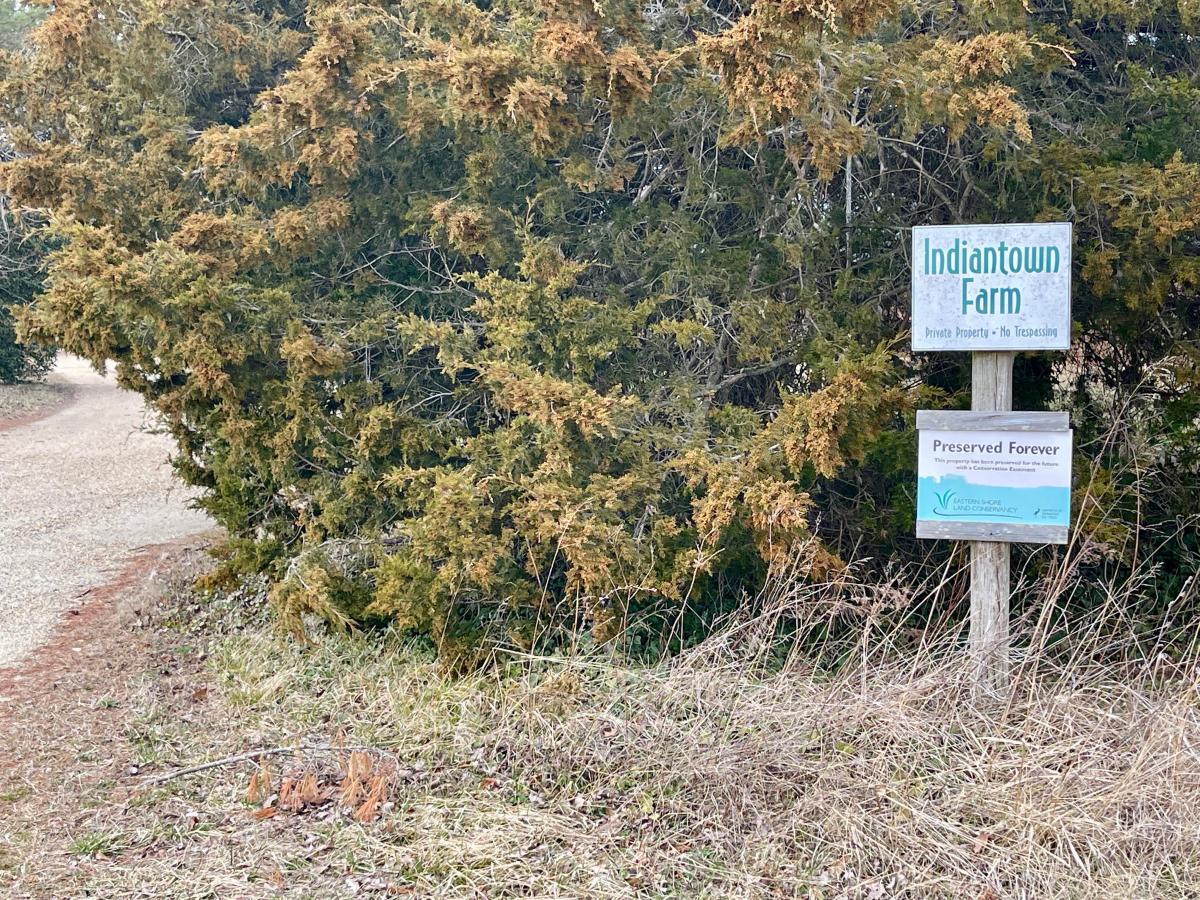
Against a backdrop of old red cedars beginning to show their eponymous springtime color, the entrance to Indiantown Farm bespeaks a deeper regional history in Queen Anne’s County.
A friend and I traveled to Chestertown this week to play pickleball at the new YMCA on the north side of town. The shining new 60,000 square foot facility can’t help but be a game changer for Kent County in terms of bringing the community together.
The previous facility, much smaller by many multiples, reportedly hosted a membership of around 700. YMCA officials predicted that the new facility would probably entice more than 3,000 members within its first year.
Now I’m hearing that since opening its doors in January, the new Y already has more than 3,000 members. Oh, that sweet smell of success.
On Tuesday, the day we played, people were swimming in the big pool, lifting weights and working up sweats upstairs on exercise equipment. In the gymnasium with its multiple courts, the constant pinging of pickleballs and bouncing leather basketballs resonated off the brightly painted and hard concrete block walls. Above, on the perimeter track surrounding the courts, people walked and talked and watched others of all ages and colors playing below. Community.
Driving westward on Route 50 and then north on 213 on our way to Chestertown, the terrain began to roll as we passed through fertile, winter-quiet fields only a month or six weeks away from tilling and planting. I mentioned in conversation that more corn is grown annually in Queen Anne’s County than in any other Maryland county. That’s one of the first important facts I learned about Queen Anne’s County when I started my career as a journalist at the Record-Observer in Centreville in 1972.
Like most of Maryland’s nine Eastern Shore counties, agriculture and seafood industries dominate the economy of Queen Anne’s County.
After passing through the heart of Centreville, and looking to kill time since we were running ahead of schedule for pickleball, we headed off westward on Spaniard’s Neck Road. The scenic route. We drove through pastures and fields and eventually turned northward again, paralleling the eastern banks of Chester River.
Long lanes lined with cedars, sycamores and other cultivated trees carried our eyes to the river’s shore. At their ends, colonial-era estates with historic homes and well-tended outbuildings overlook the usually placid water course.
One sign marking a dirt and gravel lane shaded by cedars announced a community far more historic even than the county seat towns of the Eastern Shore. Indiantown Farm. The name caught my eye back in my Record-Observer days, and did so again on this day.
Evidenced by ancient heaps of oyster shells known as middens, as well as finds through recent centuries of countless arrowheads and other stone implements – along with shards of pottery imprinted decoratively with the geometrical indentations on shelled corn cobs – this site once hosted a native American village.
Various sources note that a tribe of Indians known as the Ozinies inhabited this riverside compound and other areas on both sides of the Chester that went by some other name in the centuries before John Smith’s explorers arrived in 1608.
Howard and Mary Wood placed a conservation easement on the farm’s 333 acres in 1986 to ensure the property would remain agricultural. They were descendants of the Emory family which received the original royal land grants for this area. Howard and Mary’s descendants still live on the farm, giving it the distinction of being one of Maryland’s only remaining colonial land grants still owned and occupied by members of its original owners.
Mention of the corn cobs used to decorate native American pottery reminds me of another, really astounding fact about the cultivation of corn in our nation. I learned it just this week when reading the Smithsonian Institution’s 1992 coffee-table style book that commemorates the 500th anniversary of Christopher Columbus’s first voyage of discovery across the Atlantic. Titled Seeds of Change, the book – in a series of scholarly and beautifully illustrated articles ala National Geographic – chronicles the worldwide, history-altering impacts associated with Columbus’s arrival and those who followed.
Corn, along with potatoes, tomatoes and many other important food crops, were first cultivated in the Americas before spreading over the oceans. Evidence presented in the articles shows that North American natives began an agrarian lifestyle with the cultivation of corn about 200 AD – many centuries before Smith’s arrival in the Chesapeake region.
The most jaw-dropping fact about corn, however, is that native Americans in the Mexico and Central American regions had already been cultivating corn – called maize by them – for more than 3,000 years before its cultivation spread to North America’s indigenous populations. 3,000 years before!
All of this makes me want to study and write more about the native populations of Delmarva in the weeks and months ahead. Deep history.
Stay tuned, and thanks for reading.
Dennis Forney grew up on the Chester River in Chestertown. After graduating Oberlin College, he returned to the Shore where he wrote for the Queen Anne’s Record Observer, the Bay Times, the Star Democrat, and the Watermen’s Gazette. He moved to Lewes, Delaware in 1975 with his wife Becky where they lived for 45 years, raising their family and enjoying the saltwater life. Forney and Trish Vernon founded the Cape Gazette, a community newspaper serving eastern Sussex County, in 1993, where he served as publisher until 2020. He continues to write for the Cape Gazette as publisher emeritus and expanded his Delmarva footprint in 2020 with a move to Bozman in Talbot County.



Write a Letter to the Editor on this Article
We encourage readers to offer their point of view on this article by submitting the following form. Editing is sometimes necessary and is done at the discretion of the editorial staff.